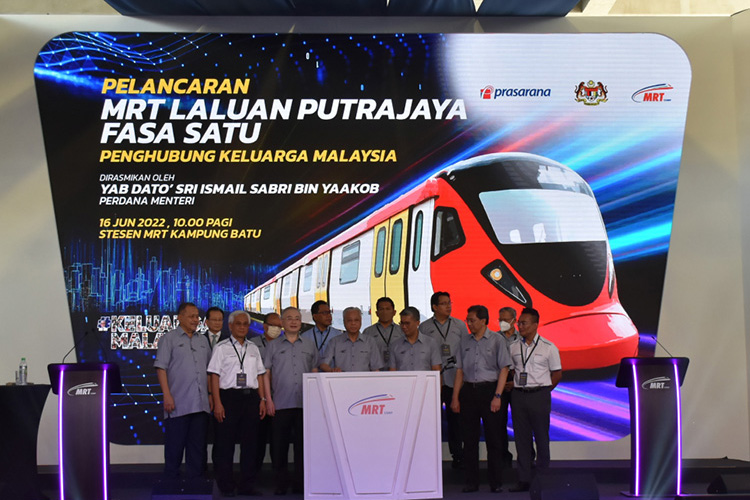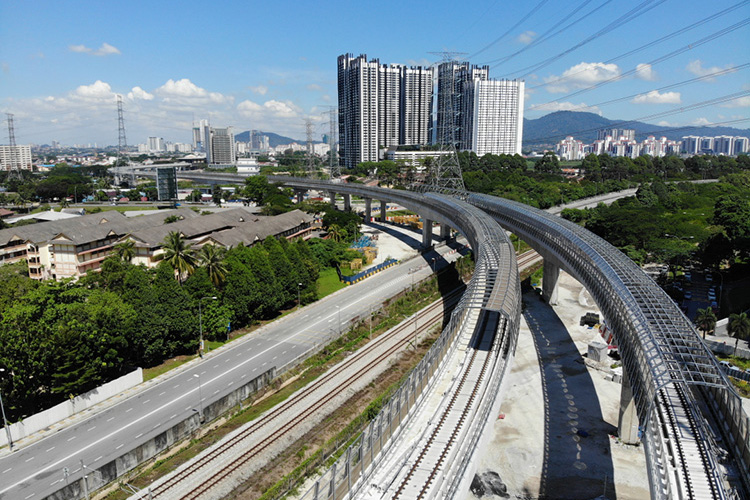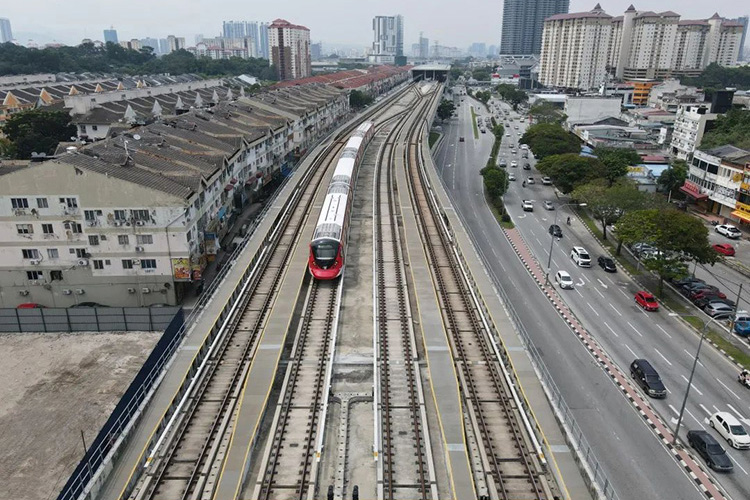Recently, the Phase 1 of the MRT Line 2 in Kuala Lumpur, Malaysia, which is constructed by CCCC, was officially put into operation. Malaysian Prime Minister Ismail Sabri Yaakob attended the opening ceremony and took a test ride.
The total length of the MRT Line 2 is 57.7 kilometers, with a 38.7-kilometer elevated section and a 13.5-kilometer underground section, 36 stations (9 underground stations and 27 elevated stations). The line will be built and operated in two phases. The Phase 1, from Kwasa Damansara station to Kampung Batu station, is 18 kilometers long; the Phase 2, from Kampung Batu station to Putrajaya Sentral station, is 39.7 kilometers long. The Phase 1 of the project is expected to begin operation in the first quarter of 2023.
CCCC will build 52.2 kilometers of the entire line and supply 6 kinds of special maintenance vehicles, which is the first time for CCCC to build a large-scale urban rail transit project oversea as a general contractor. In addition, CCCC also constructed three underground stations, one escape shaft, and a 2.2-kilometer double-line shield tunnel.
During construction, while making Chinese standards, technology, management and equipment to go global, CCCC has actively promoted localization, fulfilling social responsibility and achieving win-win development with local enterprises.
In addition to a small number of management staff, the MRT Line 2 also has a large number of local staff, which accounts for more than 85% of the total employees. In combination with China's apprentice model to train new employees, CCCC has helped young employees achieve rapid growth.
During the flooding in Malaysia at the end of 2021, the project team repaired and cleaned up the roads and construction waste, mud and other debris in the disaster-stricken area with several backhoe loaders and dump trucks, give a hand to restore the normal life of the residents.
The long subway connecting Kuala Lumpur from south to north witnesses the friendship between the people of China and Malaysia. It will enable more than 2 million residents along the line to have a half-hour living circle and greatly reduce local traffic congestion.





